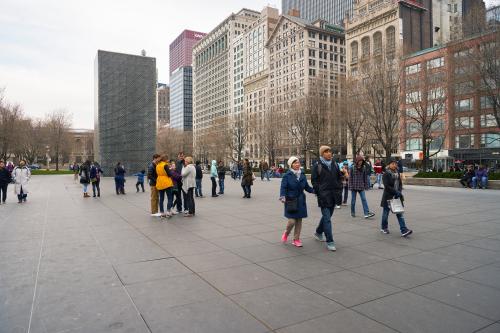The most footloose nation in the world is now staying put.
America’s migration levels, like stock market values, have plummeted. And the usual suspects—formerly booming Arizona and Florida and hemorrhaging older cities like New York and Los Angeles—reveal this new demographic reversal.
The migration bubble of the middle of this decade, fueled by easy credit and superheated housing growth in newer parts of the Sun Belt and exurbs throughout the country, seems to have popped. This is bringing “windfall” growth to coastal areas, older metros, and urban areas as would-be movers seem to be standing pat in the midst of a mortgage crisis, declining home values, and rising unemployment.
This picture is evident from newly released Census Bureau population estimates, through the year ending July 2008, that point to a sharpening of growth reversals at which previous data only hinted. In the last year, according to the Current Population Survey, only 11 million people moved across county lines, compared with nearly 16 million earlier in the decade.
At one end of the spectrum lie metro areas that are benefiting from new migration dynamics.
The greater New York metropolitan area, which lost over a quarter million domestic migrants during each of the migration bubble years of this decade, shed only 144,000 last year—its lowest out-migration since at least 1990.
And metropolitan Los Angeles, a major feeder of migrants to formerly hot markets in the Intermountain West, also halved its outflow in the last year. In fact, metro areas up and down coastal California retained more migrants who in previous years flocked to more affordable housing in Las Vegas, Arizona and the interior part of the state. For the first time since at least 1990, including the dot-com boom and bust period, the greater San Francisco area registered net domestic in-migration.
Other regions receiving a demographic windfall from reduced out-migration included Boston and Chicago, where overall populations rose in the last year. Similarly, older industrial metros such as Cleveland, Pittsburgh, Buffalo, and Providence, which have been struggling to retain more of their young people, witnessed a slowdown of the exodus.
The biggest reason these areas have held onto more would-be migrants is that the migration bubble in the interior West and Southeast has burst. The greatest domestic migration magnet metros in 2004–2005—a peak bubble year—were Phoenix, Riverside, Tampa, Orlando, Atlanta, and Las Vegas. Yet each gained far fewer migrants last year. Compared with their mid-decade peaks, Phoenix took in only half as many migrants, Las Vegas almost two thirds less, and Tampa and Orlando fewer than at any time in almost 20 years. Atlanta’s migration peaked in 2006–2007 but fell off dramatically in the last year (View Table 1). And Riverside actually registered net out-migration, its first in 13 years, as many would-be Riverside residents remained in nearby Los Angeles.
While entire metro areas showed superheated growth in the middle of the last decade, so too did suburbs and exurbs in many parts of the country. The migration fueling that growth has also fallen flat in a hurry. Nationally, exurban counties reduced their draw from 265,000 migrants in 2005-6 to just 161,000 last year. The suburban and exurban contraction was evident in all parts of the country including Washington, D.C., Philadelphia, Houston, and Dallas. Some of the nation’s fastest-growing counties through mid-decades underwent dramatic meltdowns, including places like Kendall County in suburban Chicago, Newton County in suburban Atlanta, Lake County in suburban Orlando, and Paco County in suburban Tampa.
Similar declines affected previously fast-growing, small metropolitan areas like St.George, Utah.
Yet when it comes to migration deflation, the state of Florida surely stands out. The year 2008 probably marks the first time in Florida’s history that it sustained a net domestic out-migration. Interestingly, out-migration from metropolitan Miami actually fell over the past year. The much reduced pull of hot housing markets in the rest of the state, including suburbs, exurbs, and even rural areas, drove the Sunshine State’s trend. From 2007 to 2008, 48 of Florida’s 67 counties showed reduced in-migration or greater out-migration, making its loss of magnetism a truly statewide phenomenon.
The new migration statistics show just how rapidly changing housing market conditions can affect population shifts, providing unexpected losses and gains in different parts of the country. Because these numbers do not yet reflect the substantial rise in unemployment that has occurred in the past several months, there is no telling how much more air will be let out of the mid-decade migration bubble before housing and labor markets begin to revive. When recovery does occur, it remains to be seen whether the migration-fueled engines of the early 2000s—especially the Sun Belt and outer metropolitan suburbs—will regain their former status.



Commentary
Op-edBursting “Migration Bubble” Favors Coastal Metros, Urban Cores
March 20, 2009